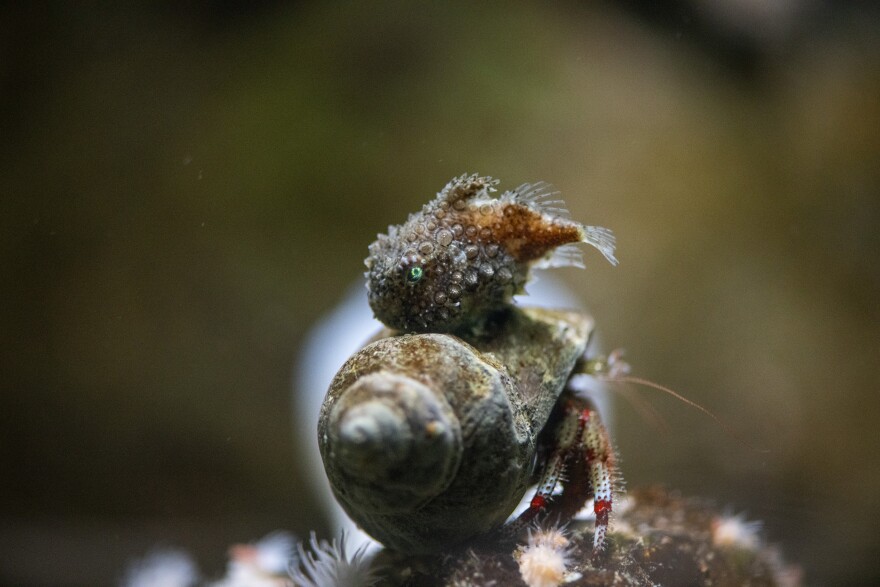The Pacific spiny lumpsucker is a clumsy, surprisingly charming fish.
At first glance, one might assume this fish, usually only a few inches long, has a hard time in the wild. It’s not the fastest or the strongest creature in Puget Sound, but it’s developed tools that help it navigate the murky depths of the ocean.
The species can be found in Puget Sound and in northern sections of the Pacific Ocean. At the Point Defiance Zoo & Aquarium in Tacoma, these fish reliably catch the attention of visitors, said staff biologist Mark Murray.
Looking at a tank where the oblong fish are swimming, Murray points out some of their notable features: “They’ve got spikes all over, they've got bulgy, reflective eyes on either side. Then on the underside of their body is a perfect suction cup.”
The lumpsucker uses its suction cup to grab and cling to objects. In a fish tank, they’ll often stick on the glass to take a break from swimming. The suction cup is an important tool the species uses to brace against strong currents while nestling in eel grass beds in the Puget Sound.
The lumpsucker is not a good swimmer. The fish has to struggle, rapidly flapping its pectoral fins, to make its way through calm water. Still, this species is able to survive in turbulent environments.
“It is very surprising when you see them and watch them swim, that something like that is surviving out in Puget Sound where there is a lot of current,” Murray said. “Most people are kind of shocked that they look like spiky little ping-pong balls that are just kind of struggling to get by.”
Karly Cohen, who researches fish at the University of Washington Friday Harbor Labs, understands why it’s hard to believe the lumpsucker can survive in this region.

“When you watch them around the intertidal [zone] you really just ask yourself ‘How are you a fish?’” she said.
The first time Cohen saw a lumpsucker was right before she started her PhD program at UW. She was out with a group of colleagues collecting specimens early in the morning. They used a light to attract fish and plankton, and Cohen remembers seeing a “globular, circular, spiky fish” emerge from the shadowy depths.
“We scooped it up in a dip net, and I remember holding this very spiky, very silly fish in my hand being like, ‘What are you?’” she said. It didn’t take long for Cohen to realize it was a lumpsucker, and she “fell in love with this really awesome fish.”
Since then, Cohen has continued to research the species. One of the most interesting aspects of the Pacific spiny lumpsucker is its scales. They’re not like the scales of a bass or a salmon.
“These little globular fishes are armoring themselves with teeth,” Cohen said.
The scales are made of some of the same material found in human teeth, like enamel and dentine. Cohen said this bony armor helps protect lumpsuckers from predators like sculpins and other small fish. It shields them from being battered against rocks by rough waves. Studying these scales may also help researchers better understand how human jaws and teeth develop.
She has found that lumpsuckers have other secrets as well. Several years ago, researchers found that platypus glowed under ultraviolet light, and Cohen was curious about what else might glow.
She started running a UV light over things in her lab and when she illuminated a lumpsucker it lit up “like a Christmas light.” She’s found that this species can glow red and yellow, which she and a colleague would later explore in published research.
There is a lot to this fish, according to Cohen. Being a clumsy swimmer is a part of its identity, but so is its ability to survive and thrive.
“It’s showing us so many millions of years of evolution,” she said. “From its fluorescence to its armor to its suction cup — all the different ways that this critter has evolved over time to succeed in its environment.”







